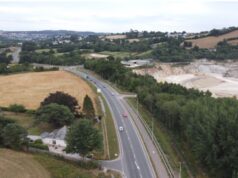Why Infrastructure Asset Management planning is vital to us all.
Local Councils, government agencies and private businesses responsible for the delivery of services to the community from long-life infrastructure assets such as roads, bridges, sewerage systems, parks, lighting, etc, have a stewardship responsibility (or sometimes mandate) to manage these assets for the enhancement of our safety and quality of life.
Leaders of organisations with mature asset management systems have greater access to transparent information and key insights which allows for better-informed decisions regarding their allocation of resources. This in turn enables these organisations to make strategic decisions that better serve their communities, customers and stakeholders for the short and long-term.
Organisations without mature asset management systems are at a much higher risk of negative social, environmental and economic consequences, potentially resulting in catastrophic service level failures such as a bridge collapse or a sewerage system breach.
How can we assure good asset management?
To ensure financially viable and sustainable outcomes for community-owned infrastructure service providers, Asset Managers need to consider the following important inputs in the development of their asset management plans:
- The needs and wants of the community, customers and stakeholders
- Forecast short, medium and long-term lifecycle costs to deliver services from infrastructure
- Impacts of demand and growth factors such as climate change, population shifts, and other drivers for change
- Communicate the trade-offs on performance, cost and risk
Once developed, it is essential that asset management plans are kept up-to-date in response to changing circumstances.
Professor Kerry Brown, IPWEA Asset Management Committee, said she “supports the need for Asset Management planning to adopt a whole of lifecycle approach from design to disposal. “
Why is asset management planning important?
Brendon Lyons, IPWEA Asset Management Committee, believes good asset planning is about having an appreciation of what is on the horizon.
“It is essential that custodians of large infrastructure assets ensure intergenerational equity from their capital investment, to ensure they are gifting the next generation a sustainable and affordable asset,” said Mr Lyons.
David Jeffrey, who represents New Zealand on the IPWEA Asset Management Committee agrees, stating: “Asset management is a long-term consideration, not just a set and forget one-off outlay.”
Infrastructure represents a huge societal investment which, in developed countries, has been built up progressively over the last 150 years. Recent estimates suggest that on average, we experience a 2% growth in assets per annum. While this investment is significant, it is vital that we also effectively manage the other 98% (International Infrastructure Management Manual, 2019)
IPWEA’s 2022 White Paper, ‘Best Practice Asset Management Of Essential Public Infrastructure’, highlights the widening gap between the building of infrastructure and the process of planning to manage the assets. This gap weakens the ability to plan for the long-term, undermining the services delivered to our communities by these assets into the future.

IPWEA’s White Paper proposes that fresh thinking around the practice of asset management is required. Having up-to-date, skilled and capable Asset Managers to manage public infrastructure assets is vital to maintain safety and quality of life.
The biggest factor that impacts good asset management planning, says Ross Goyne, IPWEA Asset Management Committee Chair, is leadership.
“Strong leadership by decision-makers is required to ensure that our community assets are managed, safe and maintained beyond the immediate future. We need leaders who are thinking about and planning for people who will never vote for them, employ them or are even yet to be born.“
“Leadership is crucial to facilitate good planning and sound asset management outcomes. Robust asset management planning is the foundation of resilient communities and their long-term wellbeing.”
“We have the systems, tools and the professional wisdom to deal with these challenges. The difference we need to see is the support from top management to make real change happen. Before it’s too late,” said Mr Goyne.

IPWEA supports Asset Managers to fully understand and respond to the current and emerging infrastructure management challenges faced by all communities with a comprehensive selection of educational opportunities and numerous support tools and documents.
IPWEA’s Asset Management Pathway program offers the most robust education in asset management and uses globally recognised tools, templates and supporting manuals such as NAMS+, the IIMM, IIFMM and Practice Notes.














